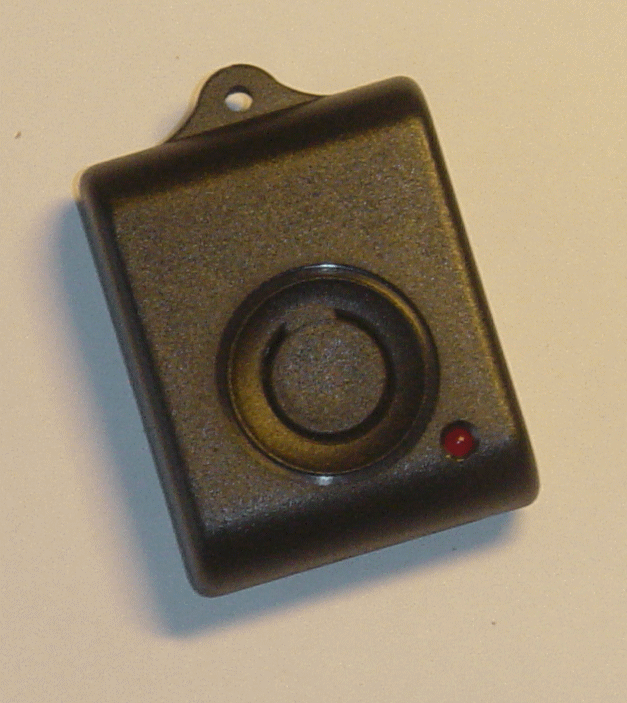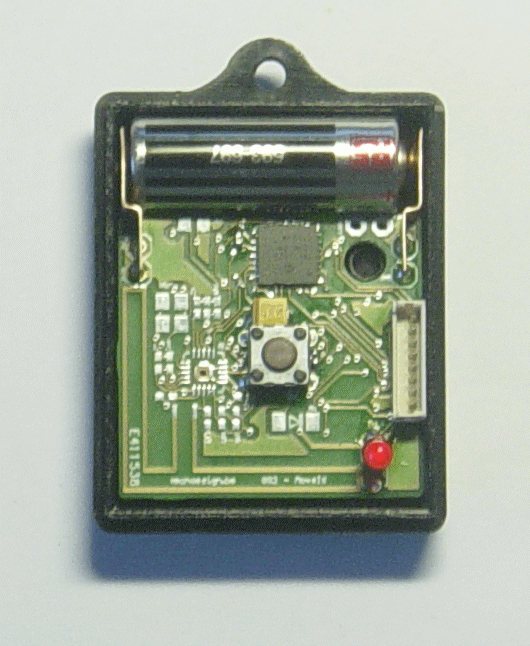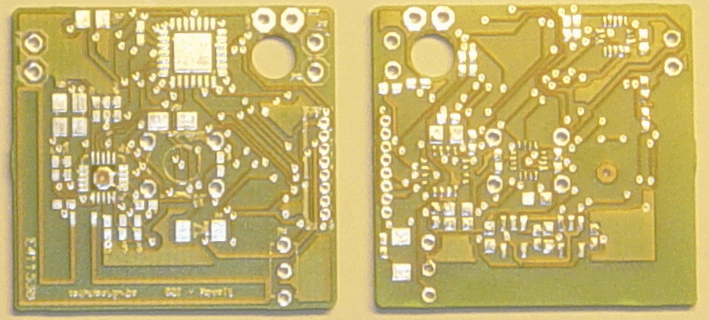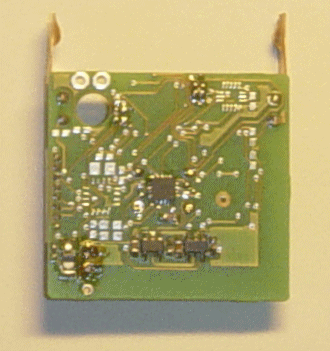|

Front view. |
|
TD-CMP04 Compass v2.
-
Small electronic compass.
- Dimensions: 45x36x15mm.
- Suited for robotics and
other various applications.
- Low current LED indicator (stays
lit when heading North) for power saving.
- Accuracy 1...2° @ 7Hz
measurement..
- Easy calibration.
- Serial RS232 readout
possible.
- One multifunction push
button for power on and calibration.
-
Low power
operation with one small +12V MN21 battery.
-
Power supply input range is +3.0V ...
+12V, only 2...5 mA active, 190ľA when sleeping.
-
Auto sleep mode after 30 seconds
(LED goes off.)
-
Runs on a PIC18F25K20 at 8 MhZ
along with an HMC5883 sensor.
Module Software Updated on
Dec. 27, 2011. |
Circuit explanation / Getting started:
|
PIC18F25k20 |
|
The 18F25k20 offers high speed and low power operation. Well suited for a
portable application such as this one. |
|
HMC5883 |
|
Digital 3-axis compass IC |
|
Push button |
|
Short press to power up the
compass (LED starts to flash.)
Long press (5 seconds) to start
calibration. |
|
LED |
|
Flashing fastly when the compass
is ON. Stays lit when
heading (top of the box as shown above) is close to North (from heading
355° to 5°)
Flashing slowly when
requesting calibration (push button for 5 seconds.)
Stays lit for calibration (for
10 seconds.)
Low current red LED for power
saving. |
|
Calibration |
|
- Have the compass placed on
a leveled (flat) surface.
- Long press on the push
button (5 seconds) to start calibration.
- The LED starts flashing
slowly.
- Continue to press for 5
seconds.
- The LED will stop flashing
and now stays on.
- Now slowly rotate the
compass 2-3 times , whilst keeping it leveled (flat.)
- Wait until the LED starts
flashing again.
- Check whether the North
indicator (LED stays on when heading North.)
|
Screenshots:
|
front view, cover removed |
|
bare PCB - populated backside |
|
 |
|
 |
|
 |
|
|
|
|
|
|
Tools:
Check out our development
tools
page.
The PIC code was made with the PCWH
CCS
compiler ($500,-); you can install Microchip's
MPLAB IDE (click on the link and you can get it for free) with it to get things
running smoothly.
Programming of the PIC was done with
a GTP-USB+ hardware programmer along with the WinPic800 software.
Eagle 4.11e
was used for the schematic & PCB layout.
Projects Home



